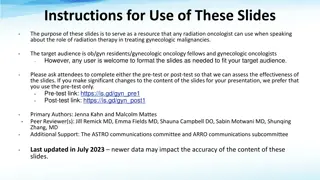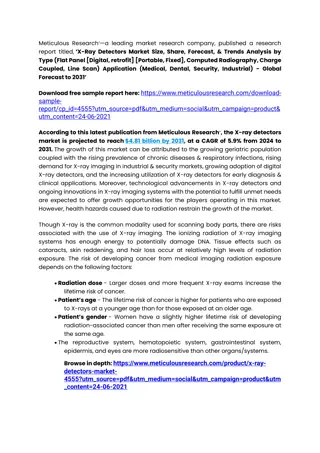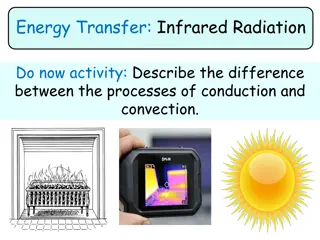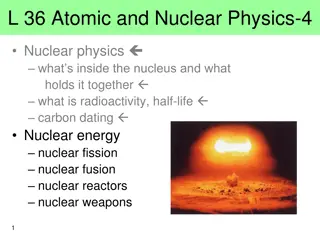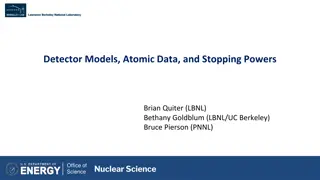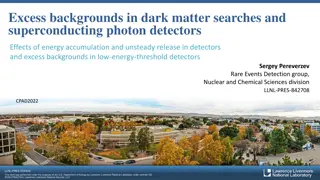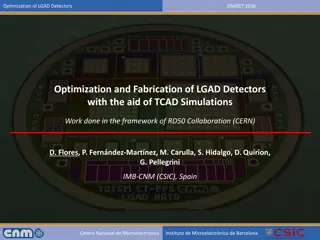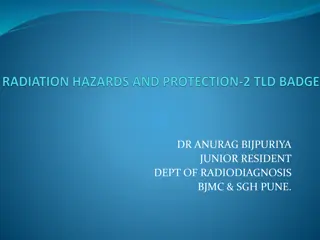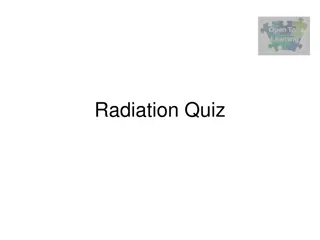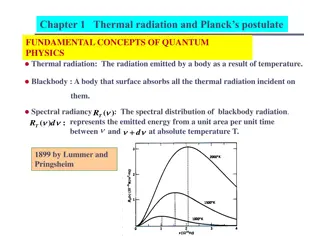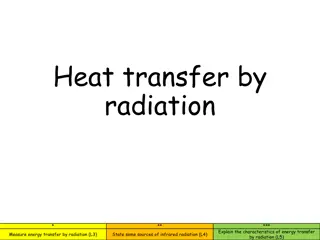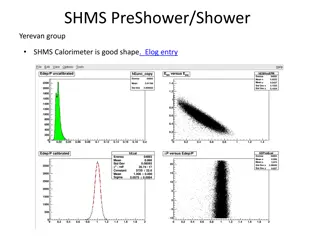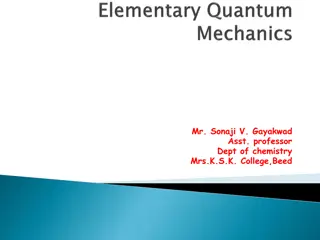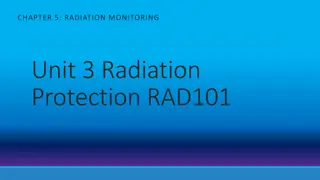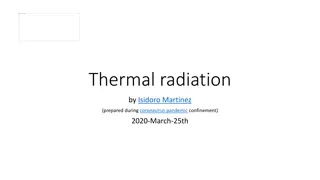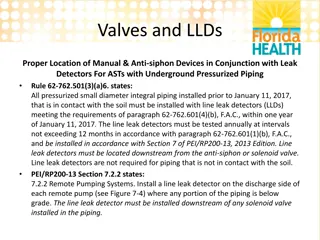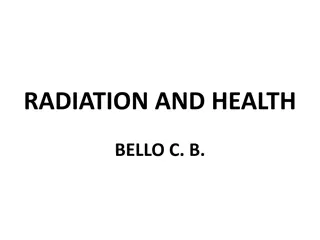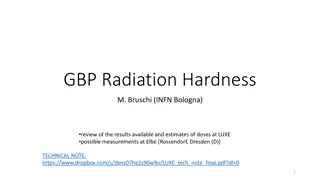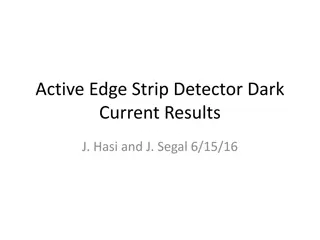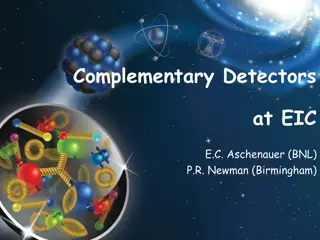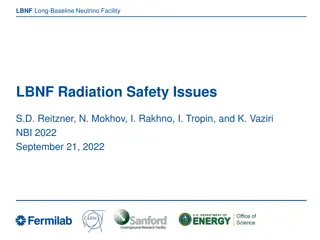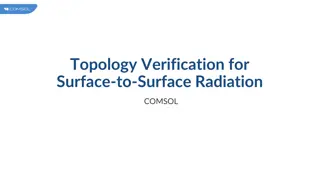Radiation Therapy for Gynecologic Malignancies - Comprehensive Overview
These slides serve as a valuable resource on radiation therapy for gynecologic malignancies. Key topics covered include radiation delivery techniques, indications for therapy, how radiation works, dosing considerations, and more. Suitable for radiation oncologists, ob/gyn residents, and gynecologic
3 views • 64 slides
Innovations in Pixel Detector Technology for Photon Science
Technologies and advancements in pixel detector development for photon science applications are showcased in this content. Topics discussed include balancing gain and dynamic range in hybrid pixel detectors, performance assessments of integrating pixel detectors, and strategies for photon detection
4 views • 21 slides
Exploring Lunar Surface Radiation Risks and Mitigations Using Bioengineering
Lunar Explorer Instrument for space biology applications, LEIA Mission, addresses radiation health risks for crewed lunar exploration. The project aims to engineer yeast strains to study radiation sensitivity and identify genetic factors affecting cellular response. The instrument suite includes Bio
6 views • 8 slides
Radiation and Black Body Radiation in Astrophysics
Explore the concepts of radiation and black body radiation in astrophysics by analyzing the peak emissions of the Sun, Earth, and distant stars. Calculate black body radiation peaks, temperatures, and power outputs for various celestial bodies, as well as heat transfer rates in different scenarios.
0 views • 29 slides
asia pacific x ray detecter
X-ray detectors are devices or systems used to capture and record X-ray images for medical, industrial, scientific, or security purposes. They are essential tools for visualizing the internal structures of objects and organisms through the use of X-ray radiation. X-ray detectors are used in a variet
1 views • 3 slides
xray detecter
X-ray detectors are devices or systems used to capture and record X-ray images for medical, industrial, scientific, or security purposes. They are essential tools for visualizing the internal structures of objects and organisms through the use of X-ray radiation. X-ray detectors are used in a variet
1 views • 2 slides
Search for Dark Photons Utilizing Advanced Germanium Detectors at University of South Dakota
Research at the University of South Dakota under the collaboration PIRE-GEMADARC focuses on developing advanced germanium detectors with low energy thresholds for detecting low mass dark photons. The study aims to optimize event detection using new Ge detectors with internal charge amplification. Th
0 views • 16 slides
Understanding Infrared Radiation in Energy Transfer Experiments
Explore the difference between conduction and convection, sources of infrared radiation, and how energy is transferred through radiation. Investigate how different surfaces emit varying levels of infrared radiation using a practical experiment with black and silver tins. Analyze and interpret result
0 views • 11 slides
Calculation of Radiation on Sloped Surfaces
The general problem of calculating radiation on tilted surfaces when only the total radiation on a horizontal surface is known involves determining the direction from which the beam and diffuse components reach the surface. Diffuse radiation models consist of three parts: isotropic, circumsolar, and
1 views • 15 slides
Understanding X-Ray Radiation: A Comprehensive Overview
X-ray radiation, discovered by Wilhelm Conrad Roentgen in 1895, is a high-energy electromagnetic radiation with a frequency range of 3.10^16Hz to 3.10^19Hz and a corresponding wavelength range from 0.01nm to 10nm. This form of radiation has applications in various fields, and its properties make it
0 views • 15 slides
Understanding Radiation Pollution and Its Effects
Radiation pollution, whether ionizing or non-ionizing, is a significant environmental concern. Ionizing radiation can penetrate tissues and cause damage to living cells, while non-ionizing radiation may effectively sterilize microbes. Sources of radiation include cosmic rays, terrestrial elements li
0 views • 15 slides
Understanding Radiation Pollution and Its Sources
Radiation pollution is a serious environmental concern caused by both ionizing and non-ionizing radiation. Ionizing radiation, such as alpha and beta particles and gamma rays, can lead to cellular damage, while non-ionizing radiation, like solar radiation, can also impact living organisms. Sources o
0 views • 15 slides
Understanding Biological Effects of Radiation in Radiation Biology Lecture
This lecture by Dr. Zaid Shaker Naji delves into the biological effects of radiation, including deterministic and stochastic effects. It covers mechanisms of damage at the cellular level, such as direct and indirect damage, and discusses somatic and genetic damages that can arise following exposure.
0 views • 10 slides
Estimation of Surface Solar Radiation in Malang Using Satellite Data Regression
Surface solar radiation estimation in Malang is conducted using IR1 channel satellite data regression. This study aims to fill the gap in radiation observation data by utilizing cloud top temperature measurements from IR imagery. The methodology involves determining radiation values based on atmosph
4 views • 13 slides
Insights from ET-ISB Workshop on Low-Frequency Noise and GWADW 2021
The ET Instrument Science Board held a workshop focusing on addressing key challenges related to low-frequency noise in gravitational wave detectors. Experts discussed topics such as mirror temperature, dealing with low-frequency noise realities, and facility limits. The workshop highlighted the sig
0 views • 13 slides
Understanding Nuclear Physics: Inside the Nucleus and its Impact
This content explores nuclear physics, covering topics like what's inside the nucleus, radioactivity, half-life, carbon dating, nuclear energy, fission, fusion, reactors, and weapons. It delves into the structure of the nucleus, radioactive decay processes, nuclear reactions, biological effects of r
0 views • 29 slides
Nuclear Data Needs for Radiation Detectors and Accelerators
Explore the essential nuclear data needs for developing and interpreting radiation detectors and accelerators. This session focuses on traditional and novel detector technologies, including transport modeling, stopping powers, light yields, and X-ray emission. Meet the experts from top institutions
0 views • 13 slides
Understanding Nuclear Physics and Radiation Hazards
Exploring the world of nuclear physics, this content covers topics like nuclear reactions, radioactivity, biological effects of nuclear radiation, and hazards of radiation exposure. It delves into the structure of the nucleus, radioactivity processes, nuclear energy, and the biological impacts of io
0 views • 30 slides
Understanding Ionizing Radiation in Medical Imaging
Radiation in medical imaging plays a critical role in diagnosis and treatment but also poses risks to patients and healthcare workers. Ionizing radiation, used in various imaging modalities, can cause harm to healthy cells if not managed properly. This article discusses the implications of radiation
0 views • 54 slides
Advances in Optical Bench Technology for Gravitational Wave Detectors
This content discusses the latest advancements in optical bench technology for gravitational wave detectors, focusing on precise measurements of back-scattered light, development of new optical cavities, and testing of Sagnac interferometers. Key objectives include improving suspension controls, red
0 views • 13 slides
Neutrino Detectors for NuStorm: Physics Goals and Detector Requirements
Physics goals for neutrino detectors in the NuStorm project include measuring exclusive neutrino cross sections, supporting long baseline programs, searching for sterile neutrinos, and improving measurements. Detector requirements involve reconstructing neutrino interactions, providing charge and pa
0 views • 21 slides
Insights into Excess Backgrounds in Dark Matter Searches and Energy Accumulation Effects in Detectors
Explore the impact of excess backgrounds in dark matter searches, energy accumulation, and unsteady releases in detectors. Delve into the implications on low-energy-threshold detectors and the emergence of complex effects in various detector types due to energy accumulation and delayed releases.
3 views • 23 slides
Optimization of LGAD Detectors: SIMDET 2016 Research Overview
Research conducted at IMB-CNM in collaboration with RD50 (CERN) focused on optimizing LGAD detectors through TCAD simulations. The project delved into simulation procedures, basic detector technologies, process technology, radiation hardness enhancement, HGTD and CT-PPS simulation, and conclusions d
0 views • 105 slides
Radiation Detection and Dosimetry in Medical Imaging
Radiation detection and measurement are essential in radiology. Various instruments like ionization chambers, film badges, thermoluminescent dosimeters, and pocket dosimeters are used to monitor radiation exposure. Personnel dosimetry is crucial for tracking radiation doses over time to ensure safet
2 views • 31 slides
Test Your Knowledge with the Radiation Quiz!
Explore various questions related to radiation, lasers, lenses, x-rays, background radiation sources, and radiation protection measures in this engaging quiz. Test your understanding of these scientific concepts and learn new information along the way. Challenge yourself with multiple-choice questio
0 views • 26 slides
Thermal Radiation and Planck's Postulate: Fundamental Concepts of Quantum Physics
Thermal radiation is emitted by bodies due to temperature, with blackbodies absorbing all incident thermal radiation. Spectral radiancy of blackbody radiation indicates varying power with temperature and frequency. Stefan's law, Wien's displacement law, and classical theories like Rayleigh and Jeans
0 views • 16 slides
Understanding Radiation Safety for X-ray Diffraction in Labs
Exposure to X-ray radiation in laboratories poses short-term high-dose and long-term low-dose risks, which are invisible and undetectable. Lab users must comprehend radiation safety principles, pass exams, and adhere to safe practices. Safety requirements include passing a radiation safety exam cove
0 views • 20 slides
Understanding Energy Transfer by Radiation and Infrared Sources
Explore the characteristics of energy transfer by radiation, learn how to measure this transfer, discover sources of infrared radiation, and understand the effects of surface properties on absorption and emission. Find out why dark surfaces absorb more radiation, how objects emit and absorb infrared
0 views • 28 slides
Updates on Calorimeter and Cherenkov Detectors in Yerevan Group's SHMS and HMS
Check out the latest updates on the calorimeter and Cherenkov detectors of Yerevan Group's SHMS and HMS. The SHMS detectors are in good shape, while adjustments in HV are needed for the HMS Cherenkov detectors to achieve optimal performance. Images and descriptions are provided in the Elog entries.
0 views • 6 slides
Understanding Black Body Radiation: Key Concepts and Applications
Black body radiation is a fundamental concept in physics, with theoretical black bodies absorbing all radiation. While no material is a perfect black body, carbon comes close. This radiation curve demonstrates energy emission at different wavelengths, influenced by temperature variations. Stars serv
0 views • 13 slides
Radiation Monitoring and Personnel Dosimetry: A Comprehensive Guide
This chapter delves into the importance of personnel dosimetry in radiation protection, covering topics such as dosimeter placement, types of dosimeters, radiation survey instruments, and calibration tools. It highlights the necessity for monitoring radiation exposure regularly to ensure safety with
0 views • 59 slides
Understanding Thermal Radiation and its Effects
Thermal radiation, studied by Isidoro Martínez during the COVID-19 pandemic, explores the transfer of heat through conduction, convection, and radiation. It delves into the concept of thermal effects of radiation, blackbody radiation, and related laws like Planck's law, Stefan-Boltzmann's law, and
0 views • 23 slides
Proper Installation of Valves and Leak Detectors for Pressurized Underground Piping
According to Florida administrative code rule 62-762.501(3)(a)6., all pressurized small diameter integral piping in contact with soil must have line leak detectors installed within one year of January 11, 2017. These detectors should be downstream from the anti-siphon or solenoid valve and tested an
0 views • 4 slides
Understanding Radiation and Its Effects on Health
Radiation is a form of energy that can be emitted from radioactive materials in the form of particles or waves. It can be either ionizing or non-ionizing, with ionizing radiation having the ability to penetrate tissues and deposit energy within them. While alpha particles, beta particles, x-rays, an
1 views • 38 slides
Advancements in Sapphire Detectors for Radiation Hardness Testing and High-Energy Physics Experiments
Reviewing radiation hardness testing, dose estimates, and measurements at LUXE, this content delves into the use of sapphire detectors in high-energy physics experiments. Highlighting sapphire's material properties, such as high radiation resistance, low cost, and specific characteristics, the text
0 views • 13 slides
Understanding Radiation in Heat Transfer for Grade 7 Natural Sciences
Exploring the concept of radiation in heat transfer for Grade 7 Natural Sciences, this content delves into how electromagnetic waves carry heat and light energy. It highlights the difference between radiation, conduction, and convection, emphasizing that radiation transfers heat energy through waves
0 views • 10 slides
Comparative Study of Different Strip Detectors for Dark Current Results
Explore various strip detectors including old baseline, extra-distance, and guard ring surrounding detectors through images showing pixel current behavior when biased. The study highlights the impact of guard ring presence on lowering pixel current in these detectors.
0 views • 6 slides
Complementary Detectors for High-Luminosity Experiments
The work discusses the need for high luminosity at full acceptance in accelerator experiments, outlining boundary conditions and requirements for detectors. Various images illustrate the integration of experimental equipment in the IR, highlighting the structure and components of central detectors.
0 views • 13 slides
LBNF Radiation Safety Issues Overview
The Long-Baseline Neutrino Facility (LBNF) addresses radiation safety issues through various components such as prompt radiation, residual radiation, activated air release, and ground water protection. Detailed modeling parameters using MARS for radiological safeguards are discussed, along with prom
0 views • 17 slides
Surface-to-Surface Radiation Verification and Boundary Detection in COMSOL
Explore the verification of surface-to-surface radiation setups in COMSOL, detecting incorrect radiation configurations with nonradiating boundaries. Learn how to identify and resolve nonradiating boundaries, ensuring accurate and effective radiation simulations. Discover the importance of selecting
0 views • 10 slides
